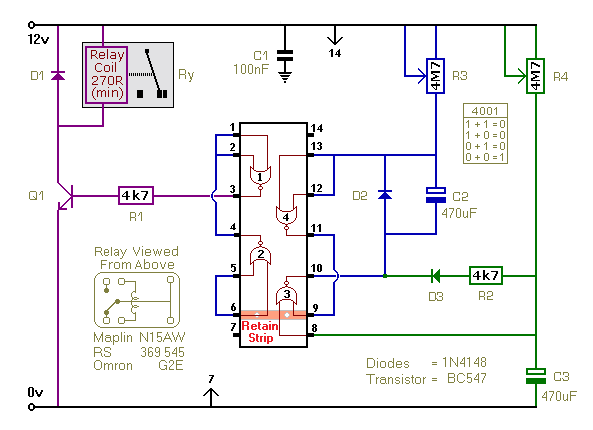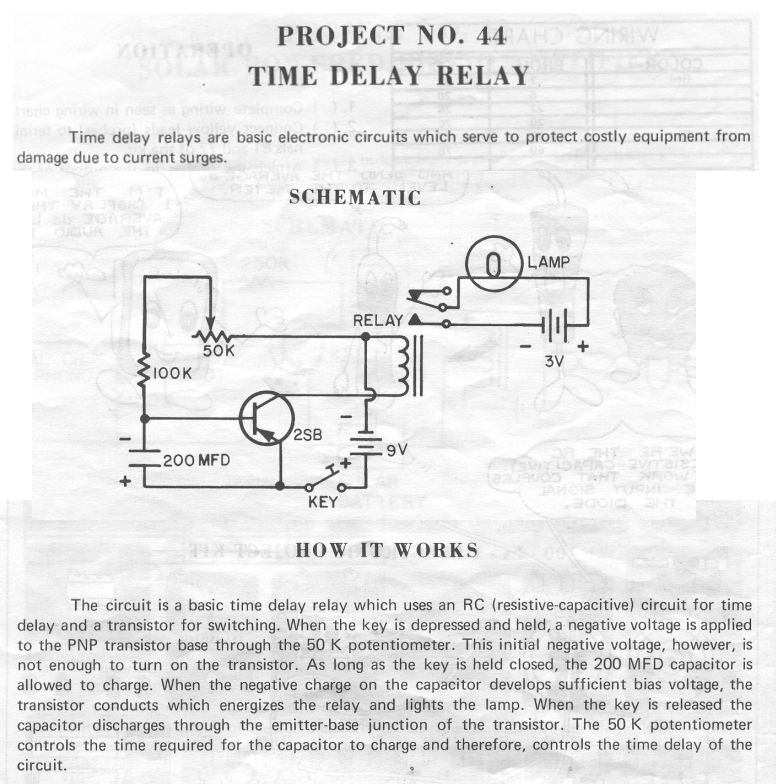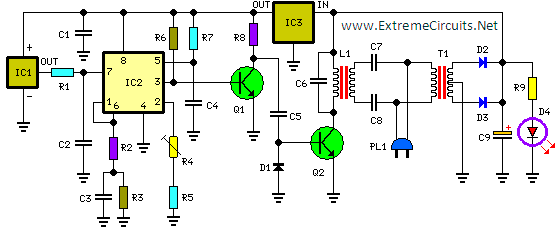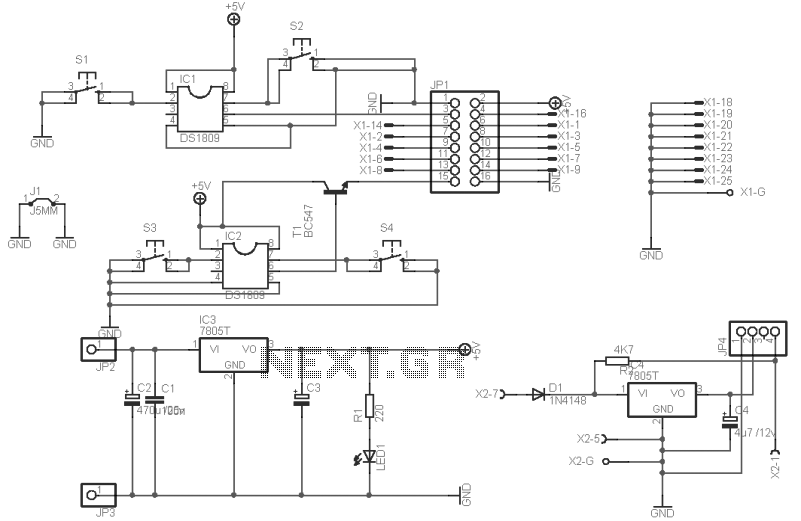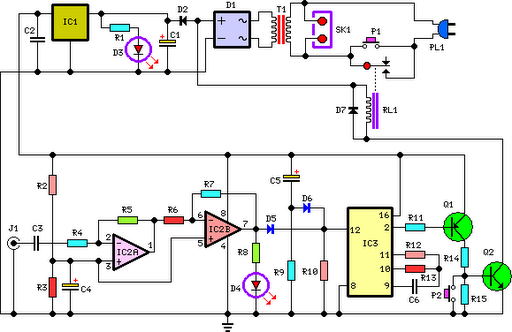
9 second digital readout countdown timer
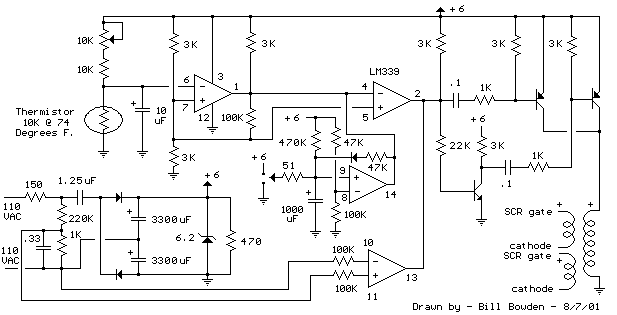
This circuit provides a visual 9-second delay using a 7-segment digital readout LED. When the switch is closed, the CD4010 up/down counter is preset to 9, and the 555 timer is disabled with the output held high.
The circuit utilizes a CD4010 up/down counter in conjunction with a 555 timer to create a visual delay of 9 seconds, which is displayed on a 7-segment LED display. The operation begins when a switch is closed, which triggers the counting process. The CD4010 is configured to count down from a preset value of 9. This is achieved through the use of preset inputs on the counter, allowing it to start counting from 9 upon activation.
In this design, the 555 timer is initially disabled, holding its output high, which prevents any unwanted triggering during the preset phase. Once the switch is engaged, the counter starts decrementing its value with each clock pulse generated by an external clock source or the timer itself, depending on the specific implementation.
As the counter counts down, the 7-segment display is updated to reflect the current count. The display is driven by the output of the counter, which translates the binary count into a decimal format suitable for visualization.
After the counter reaches zero, the circuit can be designed to trigger an output action, such as turning on an LED or activating a relay, which signifies the end of the 9-second delay. This output can be controlled through additional logic gates or a flip-flop configuration that responds to the counter's state.
In summary, this circuit effectively utilizes a CD4010 counter and a 555 timer to create a visual delay of 9 seconds, providing a clear and informative output through a 7-segment LED display. The design is suitable for applications requiring timed visual indicators or countdowns in electronic systems.This circuit provides a visual 9 second delay using a 7 segment digital readout LED. When the switch is closed, the CD4010 up/down counter is preset to 9 and the 555 timer is disabled with the output held high.. 🔗 External reference
The circuit utilizes a CD4010 up/down counter in conjunction with a 555 timer to create a visual delay of 9 seconds, which is displayed on a 7-segment LED display. The operation begins when a switch is closed, which triggers the counting process. The CD4010 is configured to count down from a preset value of 9. This is achieved through the use of preset inputs on the counter, allowing it to start counting from 9 upon activation.
In this design, the 555 timer is initially disabled, holding its output high, which prevents any unwanted triggering during the preset phase. Once the switch is engaged, the counter starts decrementing its value with each clock pulse generated by an external clock source or the timer itself, depending on the specific implementation.
As the counter counts down, the 7-segment display is updated to reflect the current count. The display is driven by the output of the counter, which translates the binary count into a decimal format suitable for visualization.
After the counter reaches zero, the circuit can be designed to trigger an output action, such as turning on an LED or activating a relay, which signifies the end of the 9-second delay. This output can be controlled through additional logic gates or a flip-flop configuration that responds to the counter's state.
In summary, this circuit effectively utilizes a CD4010 counter and a 555 timer to create a visual delay of 9 seconds, providing a clear and informative output through a 7-segment LED display. The design is suitable for applications requiring timed visual indicators or countdowns in electronic systems.This circuit provides a visual 9 second delay using a 7 segment digital readout LED. When the switch is closed, the CD4010 up/down counter is preset to 9 and the 555 timer is disabled with the output held high.. 🔗 External reference
